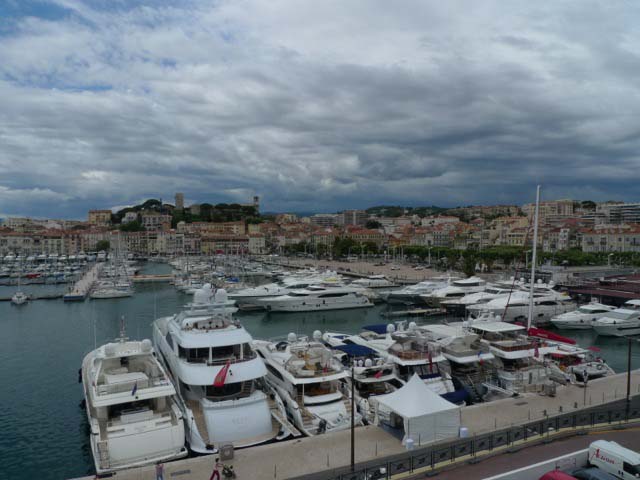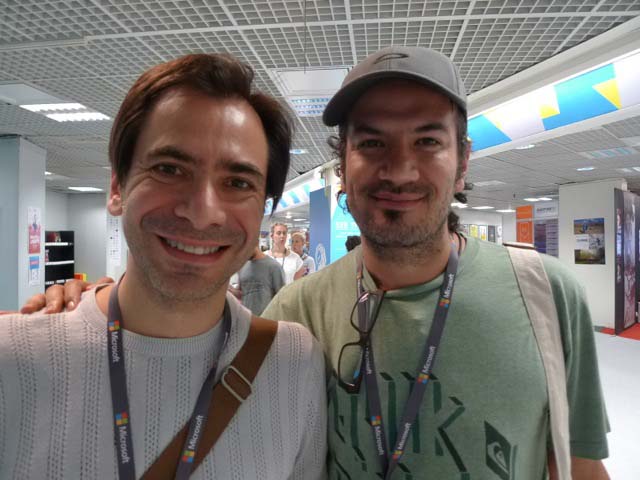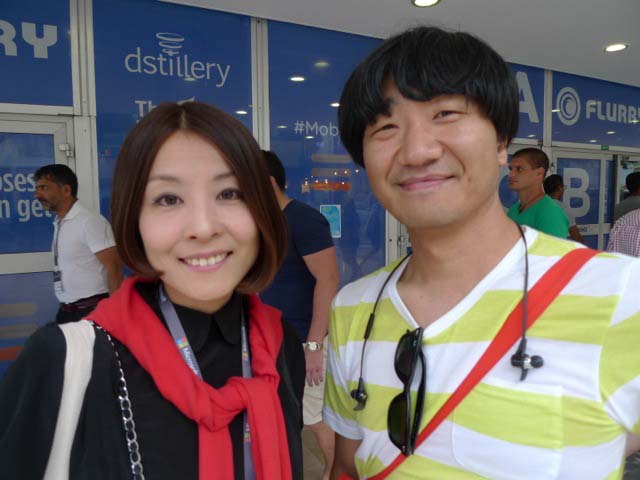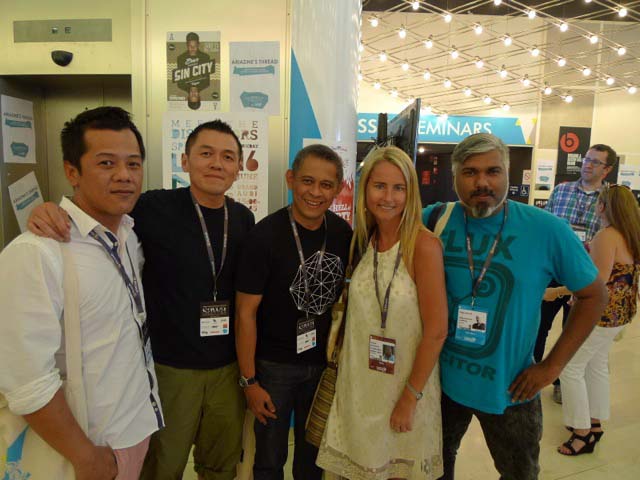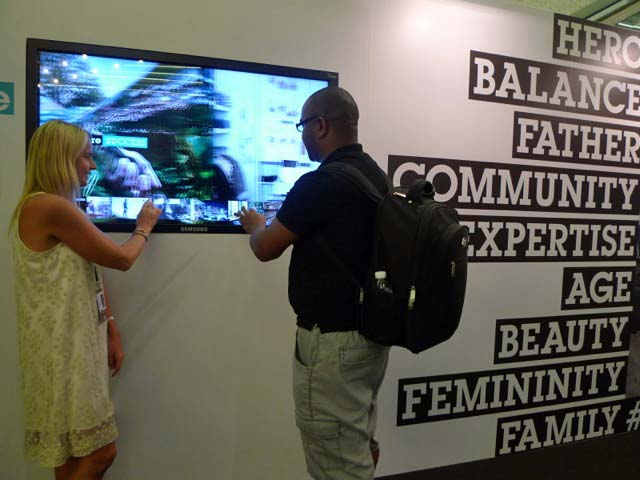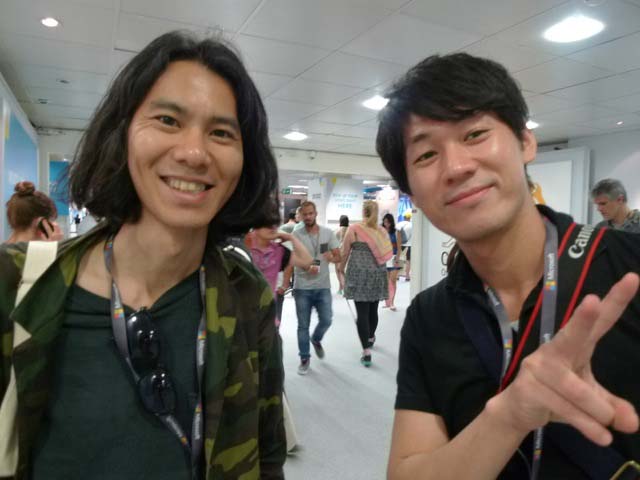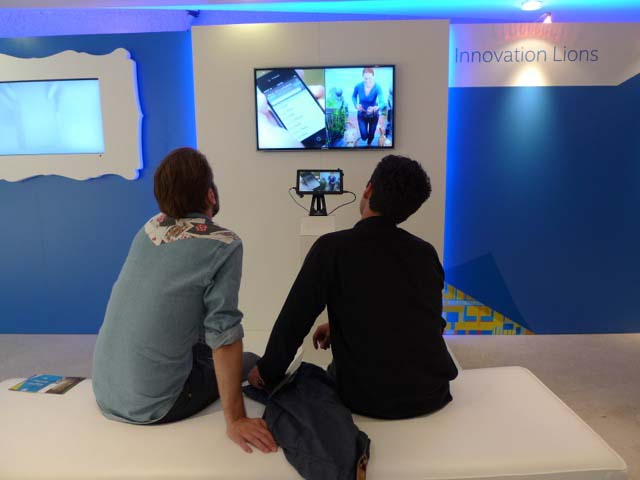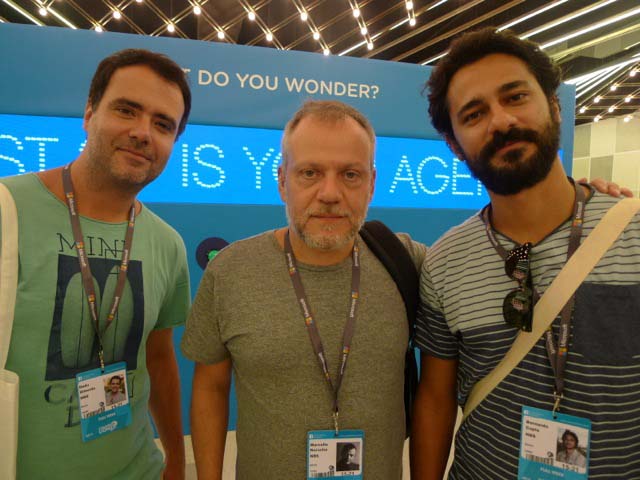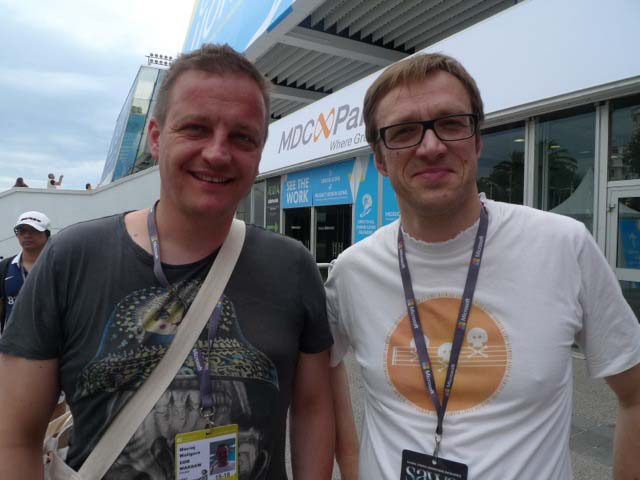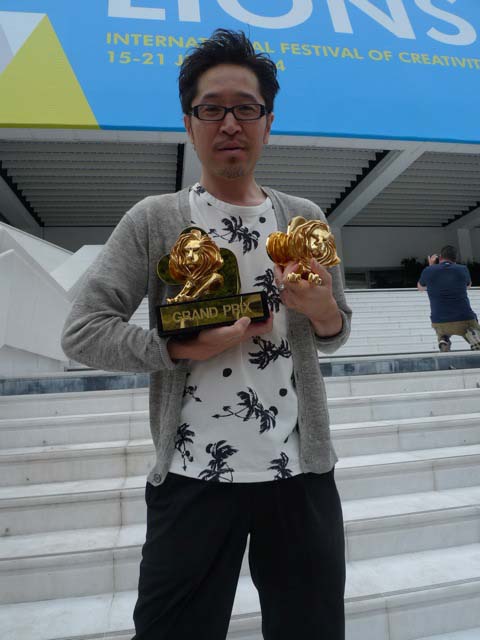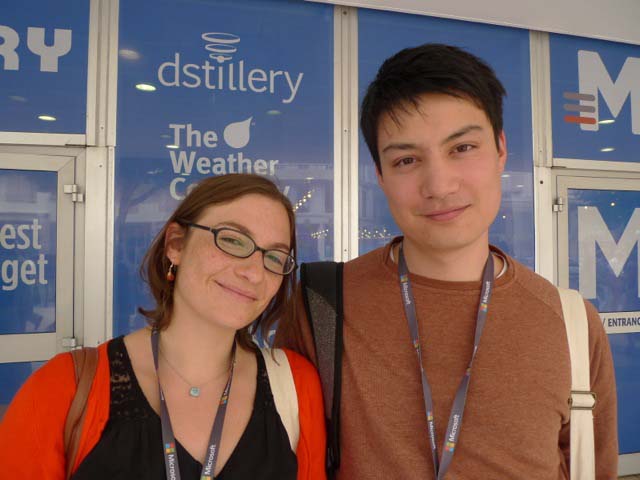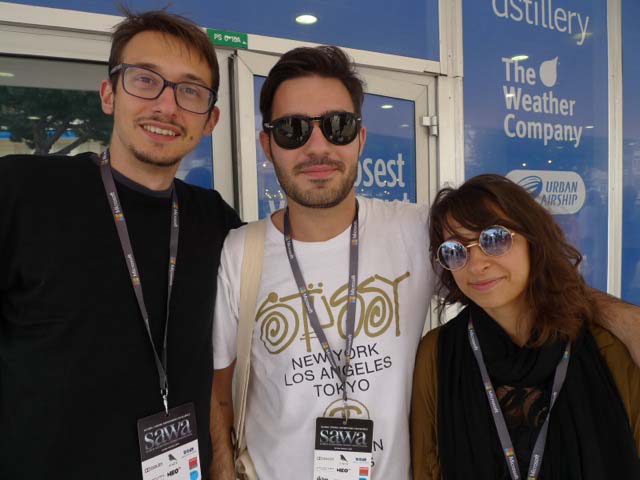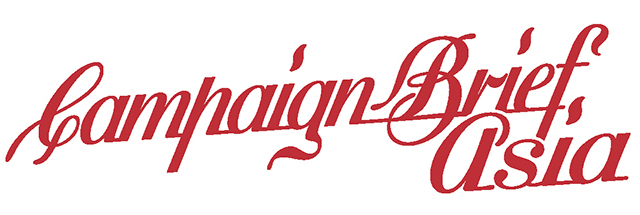Claire Davidson on the ground at the Cannes Lions Festival of Creativity: Day 1

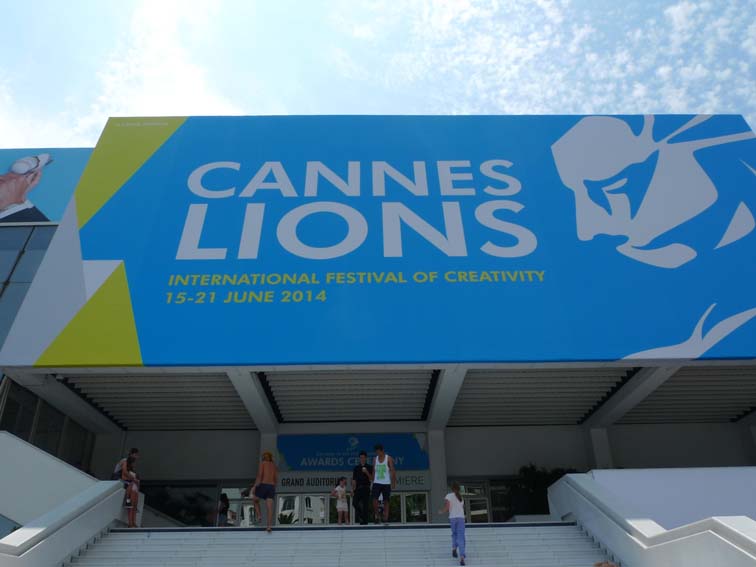 Claire Davidson (left) is in Cannes this year and is reporting exclusively for Campaign Brief Asia. Here’s her round up of the speaker sessions on Day 1.
Claire Davidson (left) is in Cannes this year and is reporting exclusively for Campaign Brief Asia. Here’s her round up of the speaker sessions on Day 1.
It’s that time of year again. It’s June. It’s Cannes. It’s our big festival.
The industry heavyweights and the creative gods and goddesses have made their annual pilgrimage, descending on France once again for the Cannes Lions Festival of Creativity. The level of competition is fierce, something the jurors know all too well. They have been locked in dark rooms reviewing world-class work for the past week. There is a slight tension in the air amongst the agencies, but this is mostly being blown out into the beautiful Mediterranean Sea and replaced by an intoxicating buzz and excitement about the week ahead. Let’s call it a positive tension.
This year sees 17 categories in competition, with a whopping 37,427 entries – from traditional film and print, to the more technologically modern mobile and integrated. New in 2014 is the Product Design Category, which recognises work in brand communication – specifically through client’s products, production processes and product interfaces. The Cyber Lions has been re-launched, with Cyber, Mobile and PR Lions now having separate sections dedicated to Social.
2014 also sees over 300 speakers with over 200 sessions, which will equate to more than 150 hours of content. Wowzers! Lucky I’ve been practicing my shorthand.
The next seven days are going to be nothing shy of exhilarating, encouraging and inspirational for our industry. The quality of the seminars is unsurpassed. The week will give us not just lectures and speaker sessions but forums, tech talks, master classes and workshops.
Thursday will bring us Brazil Day, and Saturday is being earmarked Innovation Day.
Throughout the week those coveted shiny lion statuettes will also be announced and bestowed upon the winners, with the festival culminating next Saturday in a final gala and awards evening.
We’ve started today right on the back of the inaugural Cannes Lions Health Festival, which is a new annual global awards for creative excellence in heathcare communications. With 1,423 entries, and a three day festival, there were 55 awards handed out last night. A big congratulations to Dentsu Japan, who walked away with the Grand Prix.
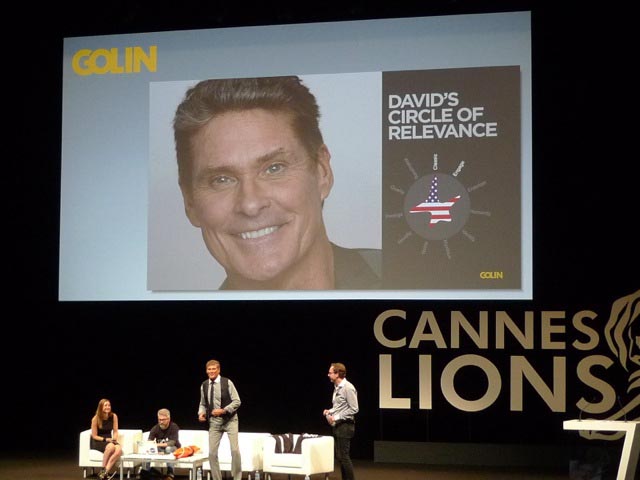
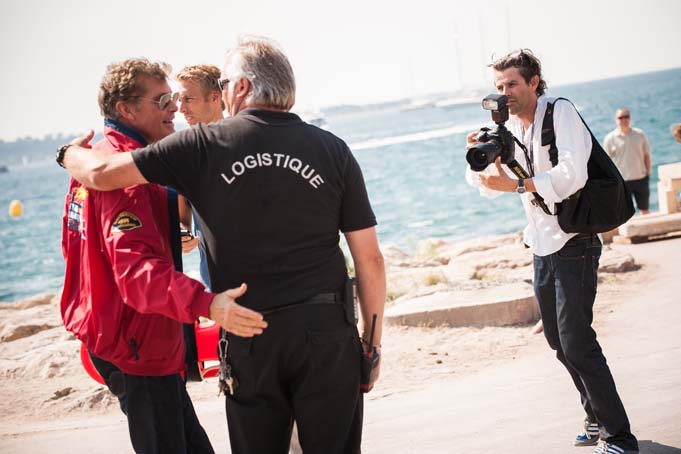 Now what better way to start the 61st Cannes Lions today than with a speaker session with The Hoff. Titled “Relevance And The Hoff”, Matt Neale, President, International, Golin and Caroline Dettman, Chief Creative and Community Officer, Golin joined David Hasselhoff on stage. I was a little upset that Kitt wasn’t here with us too. It’s understandable though as The Hoff landed at 5am this morning via private jet having closed a music festival (final act: Iron Maiden) in Austria last night. Kitt just wouldn’t have been able to get him here in time to talk to us today.
Now what better way to start the 61st Cannes Lions today than with a speaker session with The Hoff. Titled “Relevance And The Hoff”, Matt Neale, President, International, Golin and Caroline Dettman, Chief Creative and Community Officer, Golin joined David Hasselhoff on stage. I was a little upset that Kitt wasn’t here with us too. It’s understandable though as The Hoff landed at 5am this morning via private jet having closed a music festival (final act: Iron Maiden) in Austria last night. Kitt just wouldn’t have been able to get him here in time to talk to us today.
So let’s take a look at The Hoff as a brand, from a creative and relevance perspective.
Creativity is only effective in today’s world if you can master relevance. Why do some brands, ideas and celebrities penetrate, while others are seen as irrelevant and we throw them away?
What is relevance though? It is the quality of a thing, person, message, idea or brand that helps people find what they are searching for, and pinpoint the moment they seek it. It’s about anticipating what people are looking for, rather than telling them. Look at Google – they know exactly what we as consumers are looking for after we type in even just two words. When I type in “Cannes” and “Rose” Google knows exactly what I’m searching for. It’s about anticipating people’s needs. Understanding relevance is more important than understanding the static relevance of trust of a brand. As marketers we don’t want people to turn their screens off or away. Relevance is how we manage overload.
It’s somewhat sad for us to look at brands that are no longer relevant and we took a moment to do this today. Take Pontiac, Atari, HMV, Tower Records, Polaroid, Borders, Pan Am, and Blockbuster. Take other actors of The Hoff’s era who are no longer relevant – Scott Bao, Don Johnson, and Tom Selleck. The Hoff still commands a global relevance that his 1980’s counterparts do not have
.
Golin’s Relevance Fingerprint Methodology include:
Prevalence – how many people find you relevant
Intensity – to what degree do they have it
Quality – dimensions of relevance
Dimensions of relevance include: Engage, Entertain, Humanity, Mystique, Noble, Novelty, Prestige, Quality, Welcoming, Classic.
No one really has a full circle ticking all of these boxes but we looked at case studies of various celebrities today vs The Hoff. We in fact looked at David’s circles of relevance in various countries this morning. Consistently The Hoff is classic. He has timeless appeal. He’s entertaining. His lowest score was engage. People want to talk about the Hoff in their day to day lives. In Germany, the Hoff is off the charts on most levels – they just can’t get enough of him. Interestingly, the people who find The Hoff relevant are young and rich in their demographic.
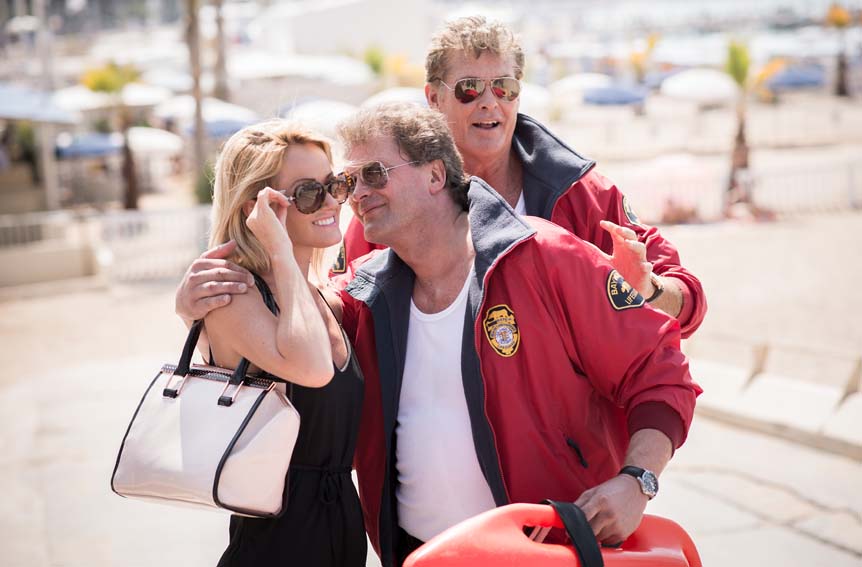 We did our own live experiment with The Hoff this morning. Launched last night globally was www.hoffornot.com, where we are asked to guess if the photo we are looking at is the real Hoff or his doppelganger. We were asked to tweet about this at the beginning of the seminar. The aim of this is to show us that by understanding The Hoff’s relevance fingerprint we can create something of the moment across all media channels. Just alone during our seminar the statistics spread and grew by 12.7 million. Yes, 12.7 million. Hoffamania.
We did our own live experiment with The Hoff this morning. Launched last night globally was www.hoffornot.com, where we are asked to guess if the photo we are looking at is the real Hoff or his doppelganger. We were asked to tweet about this at the beginning of the seminar. The aim of this is to show us that by understanding The Hoff’s relevance fingerprint we can create something of the moment across all media channels. Just alone during our seminar the statistics spread and grew by 12.7 million. Yes, 12.7 million. Hoffamania.
The Hoff let us in on a little personal secret as he was leaving us. He wears a bracelet engraved with See it, Believe it, Live it. It’s a good message for us all to follow.
Next up I took in a fantastic seminar, “Learn from the Worst: The Role Mistakes Play In Building a Creative Career”. Here we heard some of the most awarded creatives in the word discuss some of the worst work they’ve ever made. Sergio Alcocer, President + CCO of Latinworks, Guga Katzer, Partner + CCO, Loducca, Felix del Valle, Creative GM, Contrapunto & Nicolas Pimentel, Innovation Director, +Castro Buenos Aires brought us this very inspiring and very funny seminar.
Failure is not a new beginning and it’s not fun. It sucks. It’s painful. It hurts. Great creativity is rare. But we find inspiration in great stories of successful failures. Steve Jobs failed the first time at Apple. Albert Einstein failed mathematics in high school. We learn with experience. This is the real prize of failure. Without risk there is no innovation, but ours is an industry of one shots. But we sometimes have to refuse to play it safe. Fuck it, take those risks.
Guga Ketzer has more than 20 lions, but Alcocer happily announced that most of his work is really really bad.
Creatives often take themselves too seriously, and put their egos in front of their work. If you don’t have the budget and time never approve the ‘epic’ script. In digital never underestimate the scale. Make sure you have checked every single aspect of how the digital stratosphere works. Do your research. You don’t want your campaign to crash 60 seconds after it has gone live. Ketzer went on to tell us that innovation without feasibility is bullshit. Know that the technology exists to make your idea. We looked at some very very funny and terrible case studies Katzer worked on for MTV and other clients.
Nobody likes to fail. Creatives hate to fail. Agencies hate to fail. Clients hate to fail even more. You need to balance your failures and your su
ccesses. Failure and success are part of the same process in our industry. So make yourself uncomfortable. In a world where information is accessible to anyone, the most valuable is the one that isn’t. Your learning curve is so important to you, in your uncomfortableness. Don’t let your innovation totally depend on a third party without collaboration / supervision. Beware of the temptation of overloading your idea with ‘what if’s’ that can jeopardise the experience. Keep it simple, without unnecessary layers. And in innovation, as in life, reading your target audience is everything. Sometimes you can forget what the consumer really needs. Don’t become so focused on your idea.
Pimentel then took us through a new case study but we were strictly told… What happens in Cannes stays in Cannes (oh, you’d better believe it!). So I can’t tell you any more from this seminar… Thank you our Latino friends.
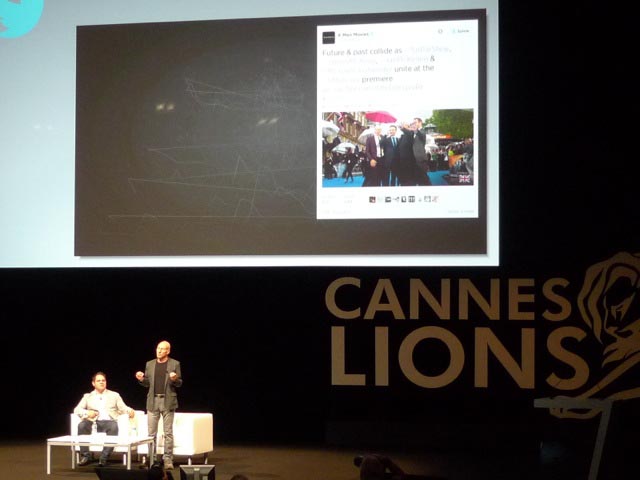 We all know only too well that today the creative process is becoming faster and more flexible with people, their ideas and their opinions. It’s also happening live. The next seminar session I took in was Twitter: # Live Storytelling. This was brought to us by Joel Lunenfeld, VP of Global Brand Strategy, Twitter, Ignacio Oreamuno, President of the Art Director’s Club, Leslie Berland, Senior VP, Digital Parnterships & Development, American Express, and Sir Patrick Stewart, Actor.
We all know only too well that today the creative process is becoming faster and more flexible with people, their ideas and their opinions. It’s also happening live. The next seminar session I took in was Twitter: # Live Storytelling. This was brought to us by Joel Lunenfeld, VP of Global Brand Strategy, Twitter, Ignacio Oreamuno, President of the Art Director’s Club, Leslie Berland, Senior VP, Digital Parnterships & Development, American Express, and Sir Patrick Stewart, Actor.
Today immediacy connects us to people and to events instantly. People are excited by this. The live storytelling movement is perhaps the greatest shift in our industry today. It affects all industry, including film, tv, music, news, politics, new media, as well as creatives, agencies and clients.
You can now connect with somebody in the moment when it’s most relevant to them. It’s about engagement for us all. Storytelling is liberated via technology today. We are the first generation to have access to all of these tools.
Patrick Stewart equates it to being much like a stage actor, but going one step further to it being personal. A stage audience lets you know if something is funny or not, and so too will your Twitter audience. With Twitter and social media this personal interaction is about how you feel, what you care about, what amuses you – with your audience and your potential audience.
He gave the creatives in the room the advice to tiptoe into this live storytelling. Do some research. Look at what it interesting to you. Everyone is trying to react to the speed and pace and change of culture. The potential in social interaction and social change is limitless. We really can change the world with this live storytelling.
Brands too need to listen to this. Marketers no longer control their brands, their image, or the messaging they are putting out in the market. It’s real time conversations by people telling stories who shape brands today.
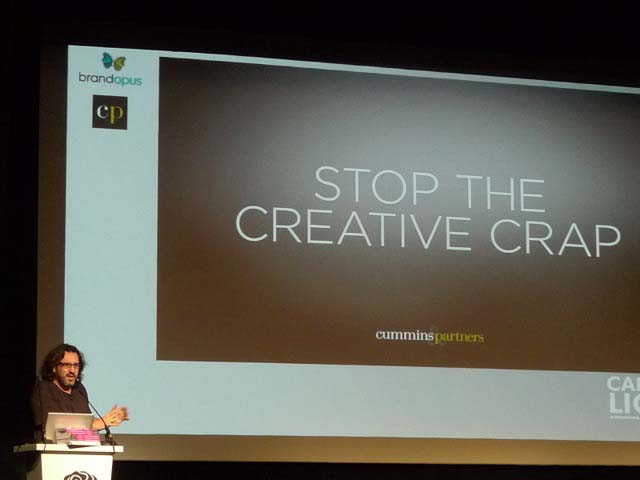 Also, today at Cannes is also Creative Talent Day, and I stopped by to see the forum, “Stop Creating Crap Creatives”. Adam Ferrier, Chief Strategy Officer and Consumer Psychologist of Cummins Nitro brought us this aptly named forum at the aptly premier creative festival in the world. I last saw Adam speak eight months ago at Spikes Asia. He’s very entertaining and very very smart.
Also, today at Cannes is also Creative Talent Day, and I stopped by to see the forum, “Stop Creating Crap Creatives”. Adam Ferrier, Chief Strategy Officer and Consumer Psychologist of Cummins Nitro brought us this aptly named forum at the aptly premier creative festival in the world. I last saw Adam speak eight months ago at Spikes Asia. He’s very entertaining and very very smart.
Ferrier spent much of the beginning of his forum telling us to purchase his new book, “The Advertising Effect”. Ferrier believes that this is the best book on advertising we will ever read. He also mentioned that repetition is most effective when people aren’t really listening at all. Hence, he decided to repeat the point to all of us advertising folk quite a lot. Again. And Again.
Ferrier is very much the behavioural scientist. He asked us what’s wrong with creativity and what’s wrong with creatives in agencies.
Creativity used to have the upper hand. There is a sense of confidence and showmanship that comes with ideas. The answer is always ‘creativity”. But when asked is this what the consumer wants, sometimes creatives do not know the answer. Creatives often just feel that their idea may work, but they may not know that it will work, or even know how it will work. Communication today is very much an interactive landscape on all levels and creatives must embellish this. So cut the bullshit and re-focus the creativity.
Science is infiltrating our system, and clients are actually embracing this. Creatives are starting to feel like they are under attack. There is a whole new body of information they have to absorb. It’s time to re-think. Maybe creativity and behavioural sciences can co-exist. Ferrier wants to see it get to one step further than this, and to see creativity because of behavioural science. He wants people to understand how it will work, rather than it be intuitive. You will have a lot more focused ideas in a much more targeted space. Behavioural science is changing the world. Look around you. It’s changing the way we receive information and communication.
So what do creatives do about this? They need to learn the basics and learn about data, technology and science. Behavioural science will give you a set of language that gives whatever you are presenting to a client more meaning. Be able to tell your client that this is why it will work and these are the psychological underpinnings as to why it will work. In parallel, sell in your idea.
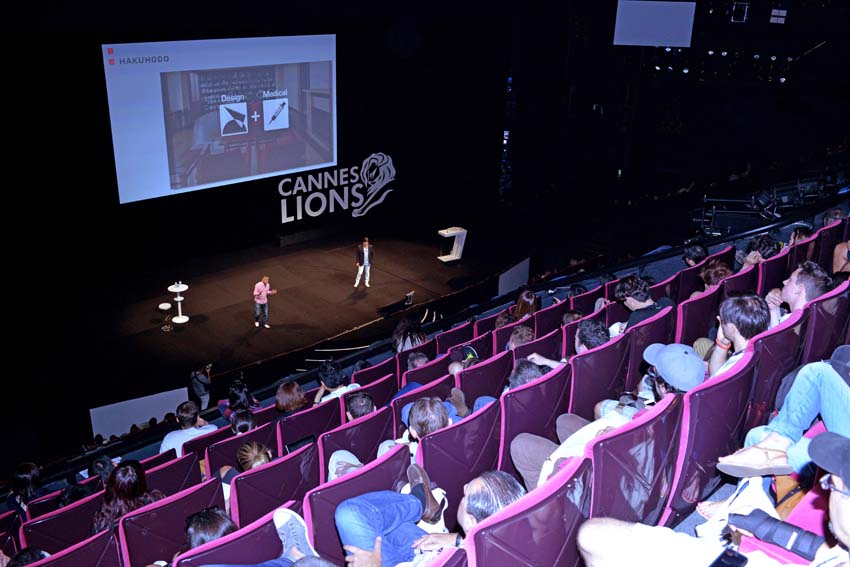
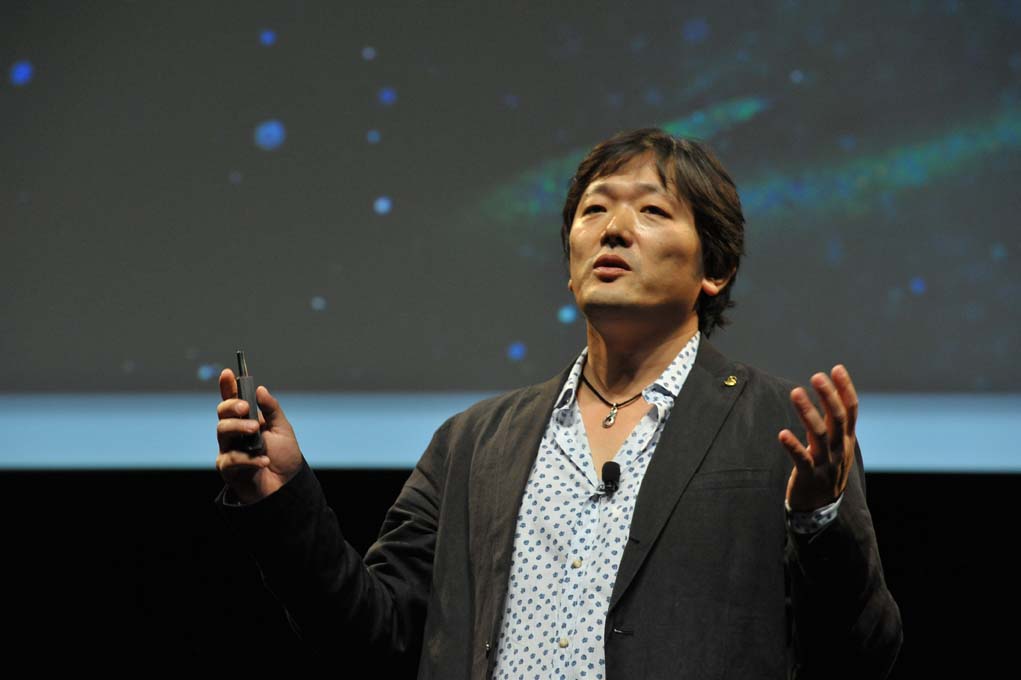
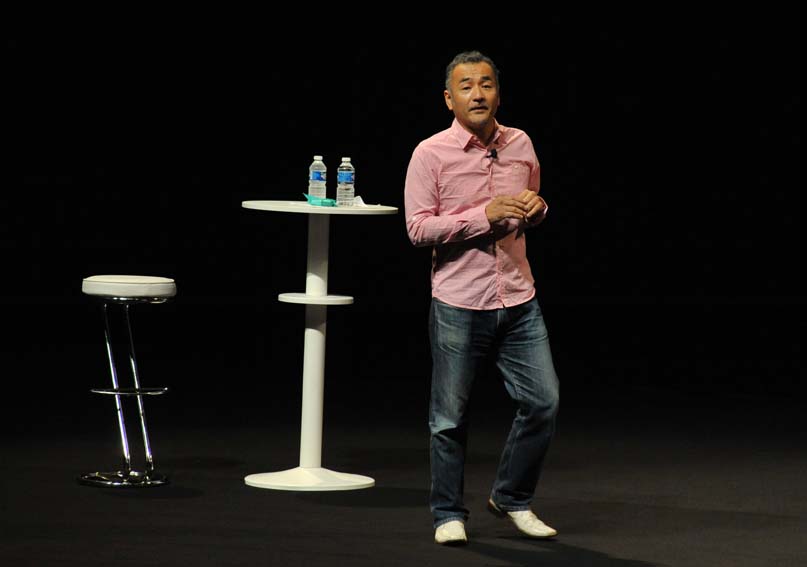 Last up today I took in The Agency Model 2014, brought to us by Morihiko Hasebe, ECD of Hakuhodo Inc and Kentaro Kimura, Co-CEO and ECD of Hakuhodo Kettle Inc.
Last up today I took in The Agency Model 2014, brought to us by Morihiko Hasebe, ECD of Hakuhodo Inc and Kentaro Kimura, Co-CEO and ECD of Hakuhodo Kettle Inc.
We all think that the technological revolution we have witnessed in recent years has been nothing short of astonishing. But fasten your seatbelts advertising folk, because it is nothing compared to the transformation ahead of us during the next ten years.
Mori has long being Kentaro’s Sensai. He’s taught him how to get free drinks in bars in Japan, how to talk to women, and oh, a little bit about advert
ising. Today the focus between these two was on how the media, technology and business environment are changing and what agencies in Japan, and the world, are doing about it.
During the past ten years, there have been many keywords or key phrases seen in the creative media, and seen at Cannes Lions as well, including the way forward, user interactivity, viral movie, real documentary, platform, branded utility, social good, digital technology, user generated, activation, behavior change, real time interaction, create shared value, and power of content, to name but a few. And what’s next?
Kentaro told us about 3 themes to think about:
What will be the agency’s expertise in 2024?
What will be the agency’s organization in 2024?
What will be the agency’s mission in 2024?
We must understand the present if we are to forecast the future. In Japan, every market is shrinking. Therefore everyone is trying to come up with new ideas and innovation.
Hakuhodo has been concentrating on how they can use their creative expertise in other industries, so how they can move their business outside the traditional world of advertising. The boundaries of advertising communication have been blurring so much of late. The core business field is a big integrated domain. Advertising skills are needed in other areas and industries, known by what Mori says is market design.
Hakuhodo has seen this potential and jumped right in. For example, they have recently created a hospital, from the hospital name, the logo, the signage, the interior design, the promotional materials, to the uniforms. The agency has also created a business hotel. So in essence they have crossed boarders where design or creative ideas are not usually involved. 2024 will see Hybrid Expertise. We can implant our creative skills into new industries. Agencies will be places for people with multiple skills.
The current advertising business model is not as profitable as before. What potential do we have beyond client businesses? Do we look at our own start-ups? That’s exactly what Hakuhodo Kettle has done.
The agency has partnered up with a production company with their own film directors. They also now distribute online, they’ve moved into publishing, they hold talk shows, and they have even launched a bookstore called B&B – Beer and Books. Customers can read books whilst drinking. They have proved that people buy more books after drinking beer. Clever thinking. Start ups need to be a small unit, they need speed, and they need risks to be taken.
Hakuhodo Kettle has taken these risks to help these offshoot companies. 2024 will see United Ventures.
When we break away from traditional advertising the agencies will see a social role. This will awaken a bigger mission. From now on we will begin social infrastructure. We will see the re-invention of other industries by upgrading our lifestyle in areas such as tourism, agriculture and housing. 2024 will be Life Design.
The advertising industry doesn’t have to be similar to the dinosaur. We can adapt to our environment. We don’t have to die out. We can invent the future. Be open to innovation with any kind of industry and be ready for change before it happens and embrace it when it comes.
To sum up the seminar in one key take out phrase, Mori left us with: people experts invent the future.
Hakuhodo in Japan has 3000 staff. Dentsu has 7000. ADK has 2000. Let’s see what the results are to today’s challenges faced by big agencies in Japan in 2024.
That’s it for me today. It’s going to be a massive week with a frenzy of activity occurring at every second at the Palais Des Festivals. On top of this of course are all of the external events and parties and oh, that little World Cup game.
I’ll be ensconced with the biggest creative talents in advertising in the world. Or the biggest wankers in advertising in the world, depending on how you want to look at it.
Bring it on I say. Welcome to Cannes 2014.
Claire Davidson, Executive Producer ASIA & MENA @ The SweetShop, reporting exclusively for Campaign Brief Asia at Cannes Lions 2014.
